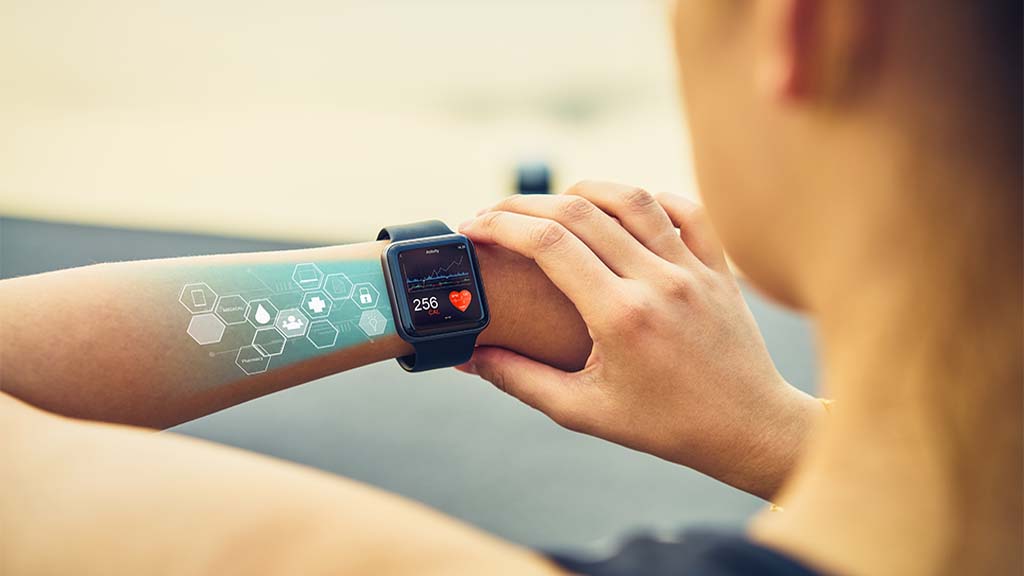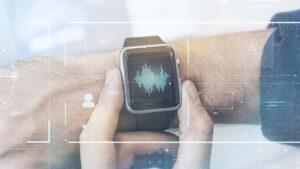
Wearable Technology Enhancing Lives through Innovation
Wearable technology has emerged as a revolutionary trend, changing the way we interact with and experience technology in our daily lives. From smartwatches and fitness trackers to augmented reality glasses and smart clothing, these devices have become an integral part of our modern society. In this article, we will explore the world of wearable technology, its evolution, various types of devices, benefits, impact on industries, challenges, future trends, and more.
Wearable technology refers to electronic devices that can be worn on the body, typically in the form of accessories or clothing. These devices are equipped with advanced sensors, processors, and connectivity options that allow them to collect data, perform various functions, and interact with other devices or services. Wearable technology aims to enhance the user experience, improve efficiency, and provide personalized solutions for different aspects of life.
The Evolution of Wearable Technology
Wearable technology has come a long way since its inception. Initially, it was limited to simple devices like pedometers and heart rate monitors. However, with advancements in miniaturization, battery life, and connectivity, wearable technology has evolved into sophisticated devices with a wide range of features. The integration of smartphones and the development of specialized operating systems have further propelled the growth of wearable technology.
Types of Wearable Technology Devices
Smartwatches
Smartwatches are perhaps the most well-known wearable technology devices. They offer a combination of timekeeping, fitness tracking, and smartphone connectivity. With the ability to receive notifications, make calls, and run applications, smartwatches have become an essential accessory for tech-savvy individuals.
Fitness Trackers
Fitness trackers are designed to monitor and track physical activities, sleep patterns, and overall health. These devices can count steps, measure heart rate, estimate calorie burn, and provide valuable insights into one’s fitness level. Fitness trackers have empowered individuals to take control of their health and make informed decisions about their lifestyle.
Augmented Reality (AR) Glasses
AR glasses, such as Google Glass and Microsoft HoloLens, overlay digital information onto the user’s real-world view. They offer a hands-free computing experience and have applications in various industries, including healthcare, manufacturing, and education. AR glasses have the potential to revolutionize the way we work, learn, and interact with the world around us.
Smart Clothing
Smart clothing incorporates technology into everyday garments, making them interactive and capable of monitoring various aspects of the wearer’s health and performance. From biometric sensors embedded in athletic apparel to temperature-regulating fibers in winter clothing, smart clothing offers a seamless integration of technology into our wardrobe. These garments can track vital signs, monitor posture, and even provide haptic feedback for improved athletic performance or medical rehabilitation.
Hearables
Hearables are wearable devices that provide audio functionalities while also offering additional features. These devices include wireless earbuds and headphones equipped with sensors for activity tracking, voice assistants, and noise cancellation. Hearables have become popular for their convenience and immersive audio experience.
Benefits of Wearable Technology
Wearable technology offers numerous benefits that enhance our lives in various ways. Let’s explore some of the key advantages:
Health and Fitness Tracking
One of the primary benefits of wearable technology is its ability to track health and fitness metrics accurately. From monitoring heart rate and sleep patterns to counting steps and calories burned, wearable devices provide valuable insights into our physical well-being. This data empowers individuals to set goals, track progress, and make informed decisions about their health and fitness routines.
Convenience and Accessibility
Wearable technology brings convenience and accessibility to our fingertips, or rather, our wrists. With smartwatches, we can quickly check notifications, answer calls, and control smart home devices without reaching for our smartphones. Fitness trackers provide real-time feedback during workouts, eliminating the need for additional equipment or manual tracking. The seamless integration of wearable devices into our daily lives makes tasks more efficient and accessible.
Enhanced Communication
Wearable technology enables seamless communication on the go. Smartwatches allow us to send and receive messages, make calls, and access social media platforms directly from our wrists. Hearables provide hands-free calling and voice assistants, ensuring constant connectivity and communication. These devices have transformed the way we stay connected and interact with others.
Improved Safety
Certain wearable devices focus on enhancing personal safety. For example, some smartwatches and fitness trackers offer built-in GPS capabilities, allowing users to track their location or share it with others for safety purposes. In emergency situations, wearables can send alerts and notifications to designated contacts, providing reassurance and timely assistance.
Personalized User Experience
Wearable technology excels in delivering personalized user experiences. These devices learn from our behavior, preferences, and biometric data to provide tailored recommendations and insights. Whether it’s suggesting workout routines based on our fitness goals or adapting music playlists to our mood, wearables offer personalized interactions that cater to our individual needs.
Impact of Wearable Technology on Industries
Wearable technology has had a profound impact on various industries, revolutionizing the way businesses operate and consumers interact with products and services. Let’s explore some notable impacts:
Healthcare
In the healthcare industry, wearable technology plays a crucial role in monitoring patients’ vital signs, medication adherence, and overall well-being. Wearable devices help healthcare professionals gather real-time data, remotely monitor patients, and provide personalized care. They contribute to early detection of health issues, more accurate diagnoses, and improved patient outcomes.
Sports and Fitness
Wearable technology has transformed the sports and fitness industry by empowering athletes and fitness enthusiasts to optimize their performance. From tracking speed, distance, and heart rate to analyzing technique and providing real-time feedback, wearables offer valuable insights that enhance training, prevent injuries, and improve overall athletic performance.
Fashion and Retail
The integration of technology into fashion and retail has opened up new possibilities for enhancing the shopping experience. Smart mirrors in fitting rooms allow customers to virtually try on clothes and accessories, saving time and effort. Wearable devices have also given rise to smart jewelry and fashion accessories that combine style with functionality, appealing to tech-savvy consumers.
Entertainment and Gaming
Wearable technology has made entertainment and gaming more immersive and interactive. Virtual reality (VR) headsets provide users with a 360-degree visual experience, transporting them to virtual worlds and enhancing gaming experiences. Augmented reality (AR) glasses overlay digital content onto the real world, creating interactive and engaging entertainment experiences. Wearable devices have opened up new dimensions of entertainment and gaming possibilities.
Challenges and Concerns with Wearable Technology
While wearable technology brings significant benefits, it also poses certain challenges and concerns that need to be addressed:
Privacy and Data Security
As wearable devices collect and store personal data, privacy and data security become major concerns. Users must trust that their sensitive information is protected and used responsibly. Manufacturers and developers need to prioritize robust security measures and transparent data policies to ensure user privacy and safeguard against data breaches.
User Adoption and Acceptance
The widespread adoption of wearable technology faces challenges related to user acceptance and integration into daily routines. Some individuals may find wearing devices uncomfortable or intrusive. Ensuring that wearables are user-friendly, aesthetically pleasing, and offer tangible benefits will be crucial in driving user adoption and long-term usage.
Design and Fashion Considerations
For wearable technology to become truly mainstream, design and fashion considerations are essential. Users want devices that not only function well but also complement their personal style. Collaboration between technology companies and fashion designers can help create wearable devices that seamlessly integrate into our wardrobes and reflect individual fashion preferences.
Future Trends in Wearable Technology

The future of wearable technology looks promising, with exciting trends on the horizon:
Advanced Biometric Monitoring
Wearable devices will continue to advance in their ability to monitor and analyze biometric data. From measuring blood glucose levels to detecting early signs of health conditions, wearables will play a vital role in preventive healthcare and personalized medicine.
Integration with Internet of Things (IoT)
Wearable technology will increasingly integrate with the Internet of Things (IoT) ecosystem. This integration will enable seamless communication between wearable devices and other smart devices, creating a connected network that enhances efficiency and convenience in various aspects of our lives.
Artificial Intelligence (AI) Integration
AI-powered algorithms will enhance the capabilities of wearable technology by analyzing vast amounts of data and providing intelligent insights and recommendations. AI integration will enable wearables to adapt to users’ behaviors, preferences, and health conditions, delivering personalized experiences and improving overall user satisfaction.
Smart Fabrics and Textiles
Advancements in smart fabrics and textiles will revolutionize wearable technology. These innovative materials will integrate sensors, actuators, and communication modules directly into clothing, enabling a new generation of wearable devices that are seamlessly woven into our everyday garments.
Wearable Tech for Virtual and Augmented Reality
The development of wearable technology for virtual and augmented reality will continue to advance. Lightweight and immersive devices will offer enhanced experiences for gaming, entertainment, training, and remote collaboration, blurring the boundaries between the physical and digital worlds.
Conclusion
Wearable technology has transformed the way we interact with technology, offering convenience, personalized experiences, and new possibilities across various industries. From smartwatches and fitness trackers to AR glasses and smart clothing, these devices have become integral parts of our daily lives. While challenges such as privacy concerns and user adoption exist, the future of wearable technology holds immense potential, with advanced biometrics, IoT integration, AI-powered capabilities, smart fabrics, and immersive experiences on the horizon.

